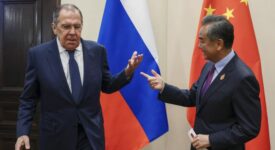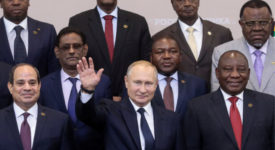Artur Kacprzyk (The Polish Institute of International Affairs)
During his visit to Europe earlier in June, American Minister of Defense, Ashton Carter, announced the historically first great protection of the Members States along the EU’s eastern border. Thereby, a long-term strengthening of the security in Central and Eastern Europe vis-à-vis Russia began. Furthermore, the American government pledged to cooperate with Russia, mostly when it comes to the situation in the Middle East, but only once the Russian aggression towards Europe ends. It is widely believed, however, that this will not happen during Putin’s administration.
Until then, the US will strengthen cooperation with NATO and EU Member States, which for example includes the rotating presence of American forces in Central and Eastern Europe together with training and exercises of EU Member States‘ military units or the support of the rapid deployment forces – Very High Readiness Joint Task Force (VJTF). By this, the US government does not intend to replace allied missions, but rather to complement these missions and support other members of the alliance in their effort to develop their own defense capabilities. On the other hand, the current American operations in Central and Eastern Europe are perceived by some EU members as somewhat provocative and there are also rising concerns that another Russian aggression might follow. It is, however, expected that the US operations and intimidation in the given area will be the most sensible way to keep Russia at bay.
The permanent NATO presence and the increasing capacity of the allied armies in the EU‘s border areas can help end Moscow’s hopes to discredit the alliance by using the local wars engineered by Russia. Keeping American troops in Europe will, however, be a difficult task in light of the calls for the US military to increase its presence in other regions, such as in the Asia-Pacific region. The situation is not being helped by European NATO members who are not really willing to fairly divide their share needed to defend Europe or those who perceive very differently threats and how to deal with them in a spirit of solidarity.
(The study can be downloaded here: https://www.pism.pl/publications/PISM-reaports/U-S-Military-Presence-in-Central-and-Eastern-Europe-Consequences-for-NATO-Strategic-Adaptation-Deterrence-and-Allied-Solidarity)







